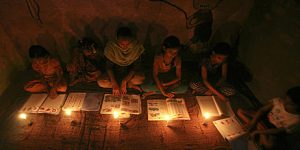
ICTpost Governance Bureau
The cost benefit analysis of a particular ICT application requires special discussion. A constant point of debate in all such discussions is; ‘Is there a killer application and if so what is it?’
The ability to offer ICT applications at the door step of the user when it comes to governance or healthcare are important. For a local self government, instead of a customer having to go to the offices of such an authority (even if the authority’s processes have been built around computers and software, if the authority representatives are able to visit the doorstep), there can be a substantial reduction in the time spent by the consumer. Such a prospect can greatly enhance the perceived value of the ICT application, thereby increasing the acceptability of ICT by the masses.
As demonstrated by a programme undertaken in the United Kingdom, achievement of success requires change in the business processes of the agency besides providing the facility of mobile computing to its workers. In fact, the manner in which this programme has been worked out in UK is such that after the pilots, guidelines are issued to all authorities so that they do not have to develop their own programmes ab initio. In short, the entire programme has to be a well thought out scheme in which all details have been taken care off and the scaling up is being done after detailed and extensive pilot trials. Unfortunately, neither such thinking is evident in the context of Indian administrative programmes nor perhaps the knowledge of accruing benefits is understood fully and presented attractively to the users.
The approach often is to take up the programme either at the central level with little conviction carried to the state entities or are taken up by enterprising state administrations. But the results are fragmented as each state operates on its own without the benefit of the experiences of the others. Such approaches lead to duplication, resulting in enhanced costs besides development of non-standard schemes and programmes.
Trials of several initiatives in the area of ICT being applied to health care have been reported with varying degree of success. A project undertaken by Narayana Hrudayalaya of Bangalore, India, headed by Dr Devi Shetty, has implemented a scheme in which mobility has been combined with ICT. Doctors of the hospital or their rural clinic move to camps in remote rural areas with a laptop which is connected to an ECG machine on the one hand and to the main hospital via a mobile plug-in connection using CDMA technology on the other hand. ECG of a patient is converted to a digital file and this 4k Byte file is transmitted to the main hospital taking about 30 seconds. A Cardiac specialist sees the ECG and sends his specialist opinion back to the rural/remote location using the same link.
The basic concept appears to be a definite advance over the ICT based e-Health programmes and clearly tremendous value addition is seen in the quality of health care since the doctor is able to send observations or results for analysis to the main hospital and get feedback while mobile. Judging by the number of patients covered by the Narayana Hrudayalaya scheme and the use of commercially available service and tools, it is clearly a highly scalable scheme.
Developments and research at various institutions is helping in the development of software to help such applications. It is evident that if mobile (nomadic mobility) is made available using Evolution-Data Optimised (EVDO) and similar technologies, the value addition to medical care will be phenomenal.
Right customer end devices at the right cost
One of the best examples of mobility adding value to ICT, is the case of mobile TV. Much like the IPTV, Mobile TV is essentially an Internet Protocol based TV service except that unlike IPTV, which operates in a point to point mode, mobile TV operates in a broadcast mode. The key advantage of these two technologies is that interactivity is possible so long as a two-way channel can be established. It is possible to have time shifted video. These mobile TV systems offer the possibility of viewing 15 to 20 channels in a single analog channel of 7 MHz bandwidth besides offering high quality viewing due to the use of digital technology.
The acceptability of ICT in this form is extremely high on the basis of projections done by experts. This is likely to be the case in India as well because entertainment is given a very high priority in most communities. This mindset along with the existing high popularity of mobile phones augers well for the success of this application of ICT in the country. Once again, it will depend on when the services can be launched. While the Information and Broadcasting Ministry has been actively pursuing it, there is no indication about the spectrum and when it will be made available.
The conclusion that can be drawn is that taking care of one or two components needed to create an information and ICT based society is not enough to even hope for success. A total and integrated plan and details of its components, participating agencies with clearly defined task for each agency is required.







